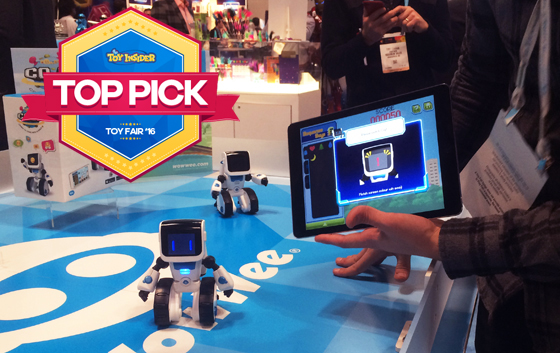Coding powers our world. It’s the language of the Internet and is a skill that people in most—if not all—industries need to succeed. Many toy companies recognize the importance of learning to code, and have created items that will turn kids into little programmers. We found a bunch of new toys and games at the 113th North American International Toy Fair that will teach kids to code without them even realizing it. Because after all, there are 10 types of people: those who know binary, and those who don’t. (Coding joke. Thanks, college!)
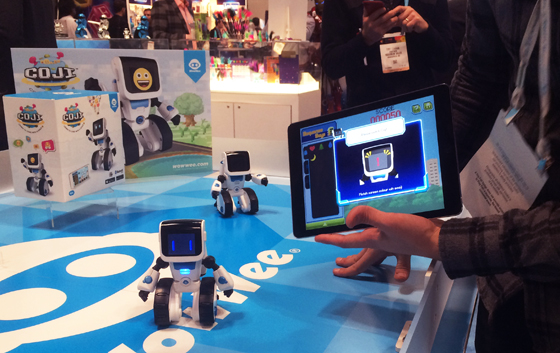
COJI (WowWee)
I’ve got some simple math for you, and I promise it won’t be hard. Coding + Emoji = COJI! Quite possibly one of the cutest little robot pals ever, COJI teaches kids basic programming skills using the visual emojis. Kids can use the free companion app on any smart device to control COJI’s actions, develop problem solving skills, and play games. For example, in one game, kids have to try to make the in-app COJI get from one place to another while avoiding obstacles. Games like this teach order of operations and logical flow. Plus, there are very specific problems in the games—and just like the real world, these specific problems require specific solutions. So, arrows will make the robot move around, and emojis such as a boat will make it go over water. Then, kids just tap COJI on his head, which will run the code in the game and reenact it in real-life. If kids get the code wrong, then its animative face gives clues to what went wrong. This robot also reacts to physical stimulation (it’ll know when it’s being tilted or shaken), comes with an LCD screen, sounds, and animations. Fun fact: The Blue Man Group owns the word “EmojiBot.”
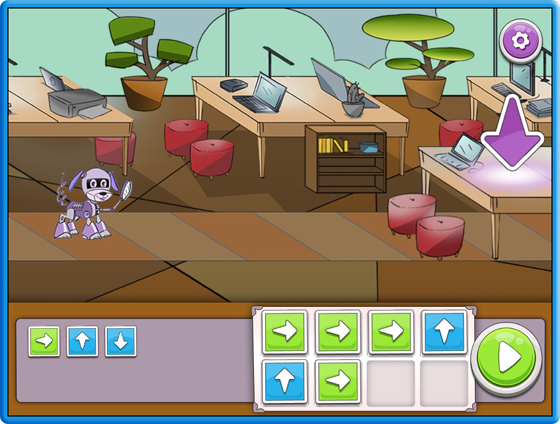
Nancy Drew: Codes & Clues (Her Interactive)
Nancy Drew is the original STEM girl. She has been using all of those skills to sleuth mysteries ever since the 1930s, and this spring, kids will be able to join Nancy, Bess, and George on a mobile mystery. The app will take kids on an adventures when Nancy is invited to a tech fair at Harrington Prep, where she is super excited to debut RoboPup. The mystery ensues when a participant’s Tech Fair project goes missing, and it’s up to players to figure out who is responsible. The app will introduce kids to the basic principles of programming throughout six chapters. Each chapter features an investigation in a different part of Harrington Prep, from a beautiful art room to an engaging music room. At the end of each chapter, kids will program RoboPup to help them out of a sticky situation, coding their way through tight spots to help solve the mystery. Kids will code the robot puppy without even knowing that they’re programming, which introduces the topic in an engaging, fun, and accessible manner. Players will learn the foundation of logical thinking, pattern recognition, sequences, problem-solving techniques, and more. But, in true Nancy Drew style, they will also find clues within hidden object games and review clues and evidence. I am SO excited for this app to launch, but now I need to figure out how to program my own robot puppy.

Think & Learn Code-a-Pillar (Fisher-Price)
This tiny critter made a giant impression at the International Consumer Electronics Show this January in Las Vegas. This caterpillar comes with a head and eight different segments, each with its own color, symbol, and USB plug. Each segment represents one action, and will make Code-a-Pillar move forward, left, right, play music, or even pause before moving again. With the press of a button, the caterpillar will move and interact with kids in the order that it was configured. Kids can also code the caterpillar to reach the two included targets they set up throughout the room. Preschoolers will definitely be engaged while learning the basics of coding, including problem solving and sequencing.
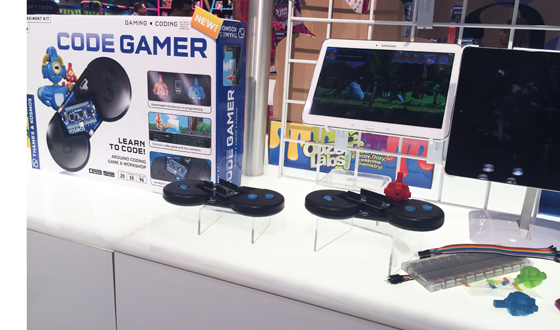
Code Gamer (Thames & Kosmos)
Kids don’t have to know how to code before they know how to walk. For older kids, Thames & Kosmos created a way to connect the physical and digital words. This kit introduces kids to programming with gaming in a fun, step-by-step way. Level by level, kids will learn the basics of programing language using a gamepad to play 15 game levels on a tablet. They can plug in one of four sensorbots into the gamepad to activate special powers—Kelvin melts ice blocks when players warm its temperature sensor in their hands; Decibels assists users if they trigger its sound sensor with noise; Lumen reveals things hidden in dark spaces when players shine light on its dark sensor; and Newton will force its way through obstacles in a path if users shake the touch sensor. The best part is that kids can apply their new knowledge into cool projects, including using the light sensor to count how many times a drawer is opened or program an alarm system that sends messages. Kids will solve puzzles, learn what program commands make LEDs on the gamepad blink and activate sound, and learn how the gamepad works and how it can be configured. Plus, kids will also design their own levels in the game, share them, and access other players’ levels. Sharing is caring.
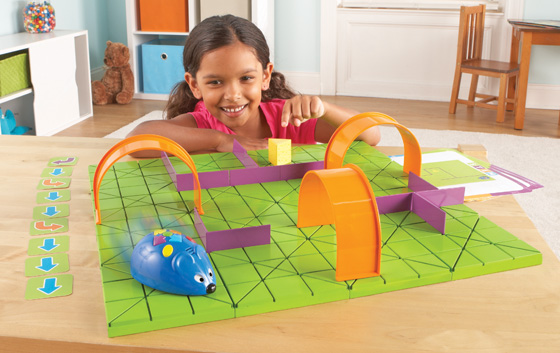
Learning Essentials STEM Robot Mouse Activity Set (Learning Resources)
The race is officially on to help Colby get the cheese! Kids can build a maze and then use coding cards to create a step-by-step path for Colby, an adorable programmable robot mouse. Kids program a sequence of steps to get Colby to find the cheese. The set comes with 30 double-sided coding cards, 10 double-sided activity cards, and an activity guide to introduce kids to coding concepts. Colby lights up, makes sounds, and features two speeds and colorful buttons for easy programming. More players can get in on the fun using Jack, another programmable mouse, sold separately!
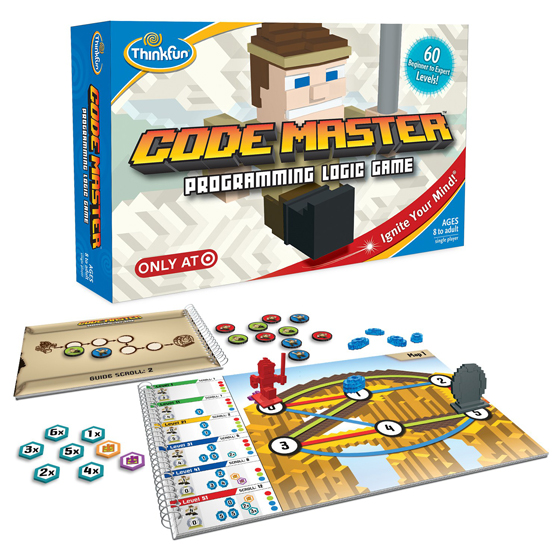
Code Master (ThinkFun)
In each level of this game, players program an avatar to harvest power crystals and reach the destination portal. The program is written using a flowchart called a Guide Scroll, which illustrates the shape of the program kids need to follow. But, only one specific sequence of actions will lead to success. The game’s 60 logic puzzles will gradually increase in difficulty, making sure that kids will always have a challenge, think like a computer, and visualize the outcome of their coded instructions.

